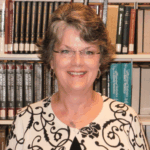
Wooster Professor Devises Way to Harvest Wind Energy to Detect Faint Signals
WOOSTER, Ohio – John Lindner, chair of the department of physics at The College of Wooster, has conceived a new use for one of our natural resources – the wind. By harvesting its clean energy, one can detect weak signals, as he and his students explain in a December article published by Physical Review, the flagship journal of the American Physical Society.
Energy harvesting is an exciting and relatively new research area, in which energy taken from our environment, in this case the wind, can power electronic devices. Lindner’s research delves further by exploiting nonlinear systems. Unlike linear systems, whose outputs are simply proportional to their inputs, nonlinear systems are more complex. For example, under appropriate conditions they can cooperate with background noise to boost weak periodic waves, a phenomenon called stochastic resonance.
“Unlike earlier mechanical stochastic resonance experiments, where noise was added via electrically driven vibrations, our broad-spectrum noise source is a single flapping flag,” he explained. “Although noise is usually considered a nuisance in engineering, in our device the noisy fluttering of a flag in a breeze enables us to detect otherwise unnoticeable vibrational signals.”
There were several versions of the tabletop experiment, starting with crude wooden wheels and evolving to a final version using computer-designed 3D-printed plastic wheels. Ultimately, stochastic resonance was achieved by harvesting the energy of a flapping flag to amplify weak periodic signals delivered to an inverted pendulum, and Lindner sees several possible uses.
“Wind is free and ubiquitous and can be harnessed in multiple ways. The simplicity and broad frequency response of flapping flags suggest the potential for diverse applications, which include microelectronic sensors,” he stated.
The publication was the result of years of research, as Lindner utilized Wooster’s sophomore research program for three successive summers. He also collaborated with a group from Grinnell College, led by assistant professor of physics Barbara Breen. Three Wooster students – Ian Wilson ’14, Elliot Wainwright ’15, and Nate Mathewson ’x16 – are co-authors of the publication.
Posted in News on January 6, 2017.
Related Posts
Related Areas of Study
Physics
With one-on-one guidance from a faculty mentor, every physics major completes independent research in a year-long research project
Major Minor

